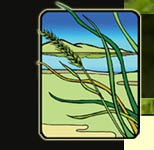Oak and Manzanita: Exciting Research Happening at Central Coast Wilds!
Story by Aaron Fitch and Shelby Baker
Central Coast Wilds (CCW) is a wholesale and retail native plant nursery specialized in growing watershed specific plants for large scale habitat restoration projects and ecological landscapes. We are a science based research and development nursery that is committed to enhancing the biodiversity of California’s bioregions. Our Research and Development (R&D) Department uses basic and applied research to gain a comprehensive understanding of detailed nursery production. By using a scientific approach we make accurate observations and new discoveries to improve our production efficiency and overall plant health. By documenting our findings through our R&D program we provide valuable information to the horticultural community. Below are several example studies we’ve performed at our nursery in the past few months and our findings based on that research!
Sowing Oak Acorns
Here at CCW the most popular Oak species that we grow are Quercus agrifolia (Coast Live Oak) and Quercus lobata (Valley Oak). This has given us the opportunity to research and develop the best method towards producing successful and healthy oak trees for restoration. In one study, acorns with 4+ holes were less likely to germinate successfully than acorns with a couple or no holes. We hypothesize that the more holes an acorn had, the higher likelihood there was of the radicle or embryonic new shoot being damaged by the acorn grub inside. By using acorns with only 0 - 3 holes, however, we were able to produce successful trees. While acorns with 4+ holes will not be used for future CCW projects, we will be able to salvage acorns that might otherwise have been overlooked that have 1 - 3 holes.
In a separate study, we concluded that the angle at which acorns are planted is significant in determining the resulting growth patterns observed. We compared two strategies commonly used in the past for acorn sowing at our nursery, represented below in Figures 1 and Figure 2. Figure 1 shows the acorn planted with a horizontal positioning, while Figure 2 shows the acorn planted with the tip straight down. Our results showed that acorns planted straight down were prone to getting stuck and curling inside the acorn. However, when planted on its side the percentage of acorns that were able to germinate were able to grow beyond the seed coat into healthy trees. We hypothesize that the acorns planted on their side are more successful because their positioning mimics what naturally occurs in nature as oaks drop their acorns. This study can be applied to restoration projects that use direct sowing of acorns in the field and a propagation technique in nursery settings.
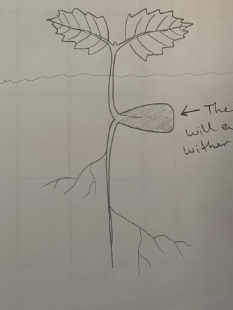
Drawings by Jessica Calvillo |
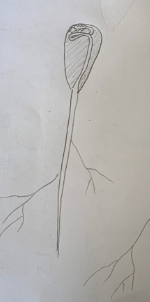
|
Propagation from Cuttings
Another way we propagate plants at CCW is by cuttings, plant sections originating from the stem, leaf, or root that are capable of developing into new plants. Arctostaphylos spp., manzanitas, are notoriously challenging to propagate through seeds. To produce manzanitas in our nursery we use cuttings. To maximize the success of our cuttings we experimented with two different types of cuts, heel and straight. We define a heel cut as a cutting that includes a portion of the bark or mature wood at the base. A straight cut is a cutting that is taken from the stem with pruners at a slight angle. Figure 3 shows a heel cut of a manzanita and Figure 4 shows a straight cut. The cuttings with heel cuts had a better success rate (48%) than the cutting with a straight cut (31%). Therefore, whenever possible we will use the heel cut method on manzanitas for cutting propagation. These findings will help us make better decisions for future cuttings of manzanitas and other California native species.
With each R&D experiment we gain valuable information that we can use in further propagation. Our goal is to continue researching different ways to make CCW efficient while producing beautiful, healthy California natives. We hope our findings can be beneficial to our community and help restore our native wildlands.
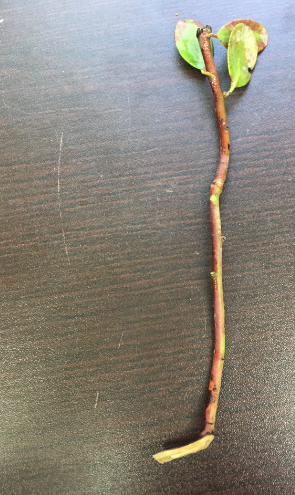
Photos by Aaron Fitch |
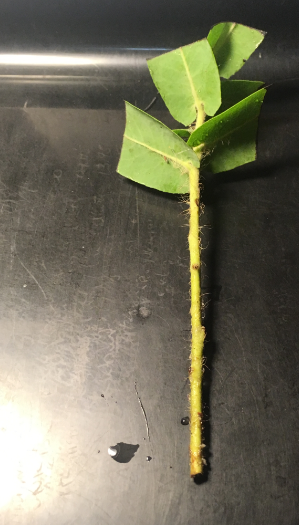
|
